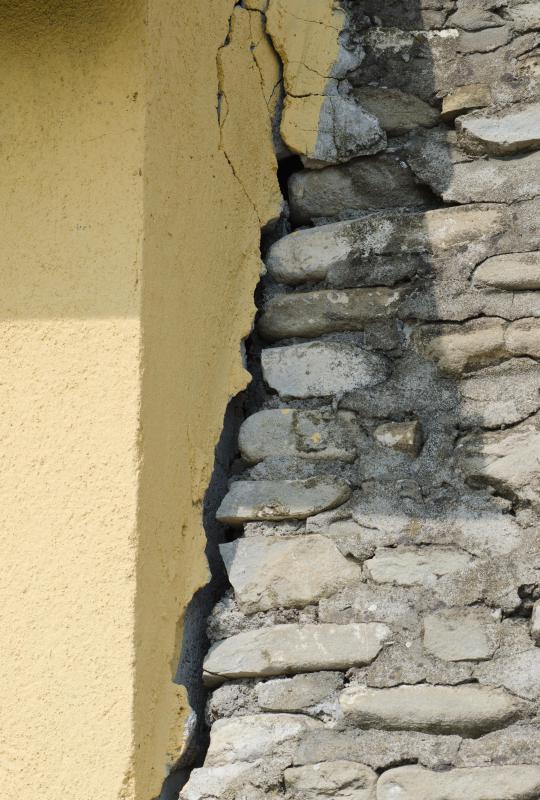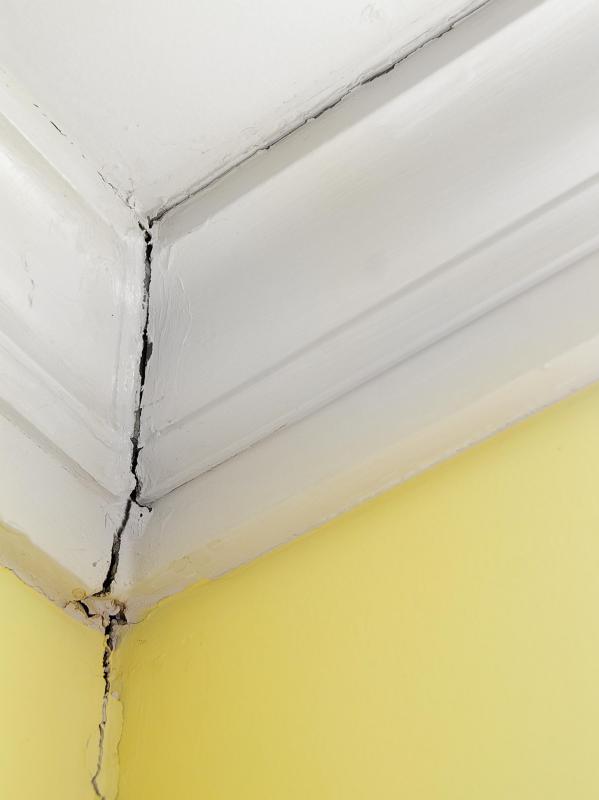At HomeQuestionsAnswered, we're committed to delivering accurate, trustworthy information. Our expert-authored content is rigorously fact-checked and sourced from credible authorities. Discover how we uphold the highest standards in providing you with reliable knowledge.
Which are the Most Common Stucco Problems?
Some of the most common issues with stucco occur because of moisture. Stucco problems like efflorescence, decomposition, peeling paint, rot, bugs, and mold usually happen due to the level of moisture that comes into contact with the stucco itself. In many cases, cracks can also occur, but often this is not related to moisture. While some stucco problems are not related to the way the stucco was put in place, many issues can happen with both conventional and newer styles of stucco if they are not installed properly.
In cement style stucco, cracking can occur for several different reasons. Moisture that becomes trapped within the walls of the home can expand and contract with the weather, causing cracks. In some areas of the world, earthquakes can also cause them. Soil movement can cause older homes to shift, resulting in cracks, and newer homes may crack because of shrinking lumber. If a home is not built properly, stucco may even crack because of the amount of pressure the wind generates.

Efflorescence is the salt from evaporated water that can appear on the stucco exterior of a home. This usually occurs when moisture in the water is drawn into the soil, where it evaporates. The salt then remains on the surface of the stucco. Most often, any paint peeling that occurs will happen with efflorescence.
Paint peeling off of stucco is also a result of moisture and, many times, improper installation. It may result from bad flashing, improper caulking, or painting film that is already cracked and riddled with holes when it is applied. Bad ventilation can also cause stucco problems that result in peeling paint. These stucco problems allow moisture to seep into the stucco walls, causing both peeling paint and efflorescence.

Moisture from the soil ca also enter the stucco from the lower part of the walls. This can get behind a wall and, in some cases, become trapped, where it slowly begins to rot the wood and damage the structure of the home. This may attract bugs and encourage fungus, or mold, to grow. These issues can result in health problems for those who live in the house as well.

Proper installation and adequate sealing are required to prevent decomposition of the house structure due to moisture. Stucco problems that occur for this reason can be prevented by sealing the exterior finish off from any condensation or moisture. Regular inspections can be done to ensure that water has not entered the walls. These checks can also help homeowners to be sure that no mold or bugs are present.
AS FEATURED ON:
AS FEATURED ON:















Discussion Comments
Are there state regulations in Florida for installing stucco?
I have also noticed a lot of problems occurring with the absence of certain flashing.
The weep screed at the bottom of the wall can be an issue if it does not hang below the wooden substrate at least an inch. If flush with the wood, it will absorb any water from rain, sprinklers, etc. and allow the wood behind to act as a sponge would, soaking up as much water as it can.
Also, "L shaped" flashing that usually ties the wall into the roof is missing or installed incorrectly. A lot of water runs down the roof and if it penetrate the wall from the roof somewhere, then all that water will work its way down the wall, making a huge problem that will cost a homeowner a ton of money in damages.
Be sure to address larger cracks in the stucco. If you can fit a quarter in the crack, then it needs to be addressed. Filling the crack with and acrylic first, then caulking and painting it will alleviate the problem. There are a couple of different methods that will solve this problem, but that is the easiest for homeowners to do themselves.
Hope this info helps out. --Ryan - Twenty-plus years of stucco experience
Post your comments